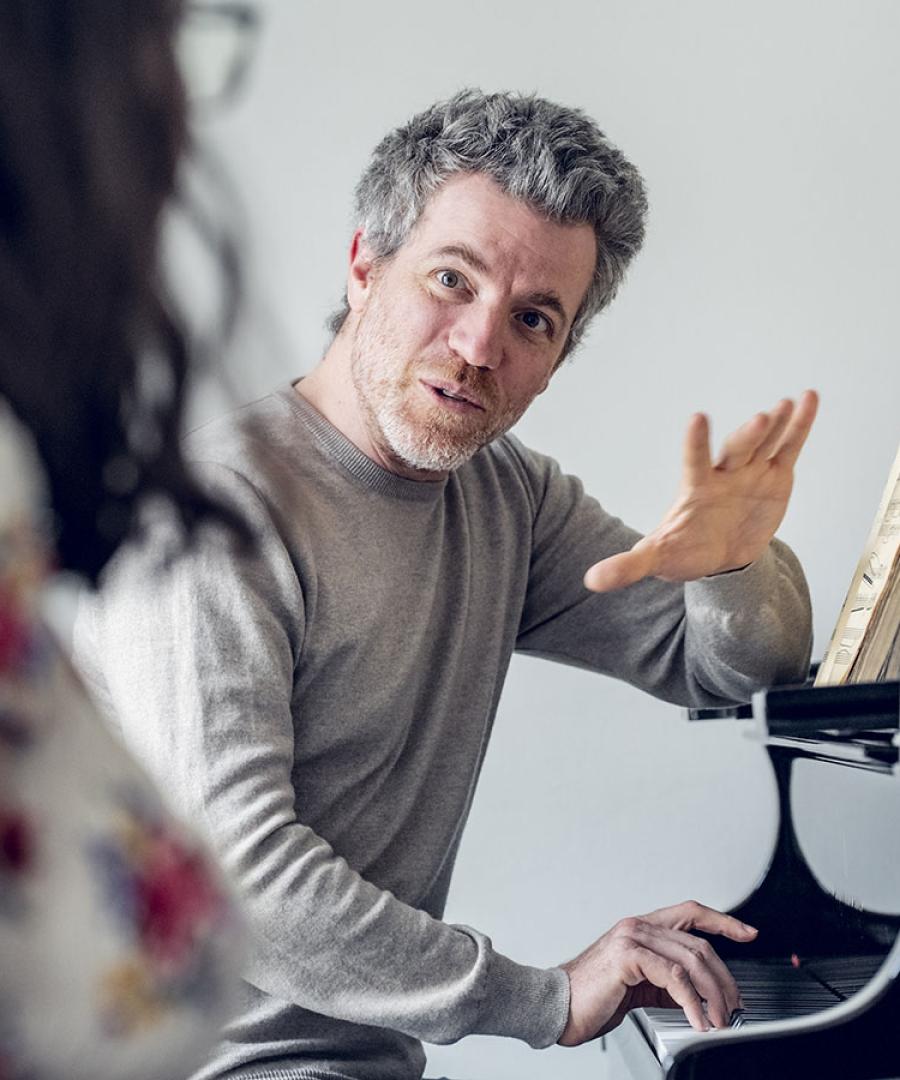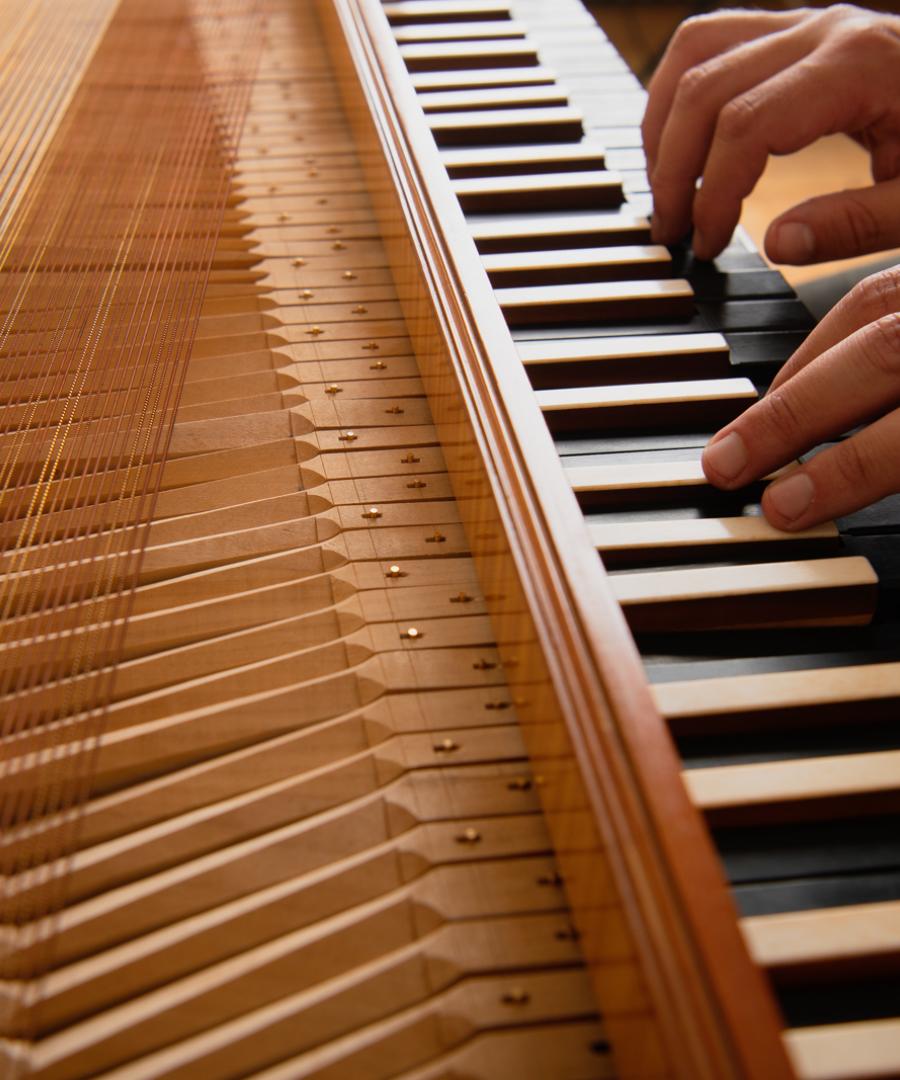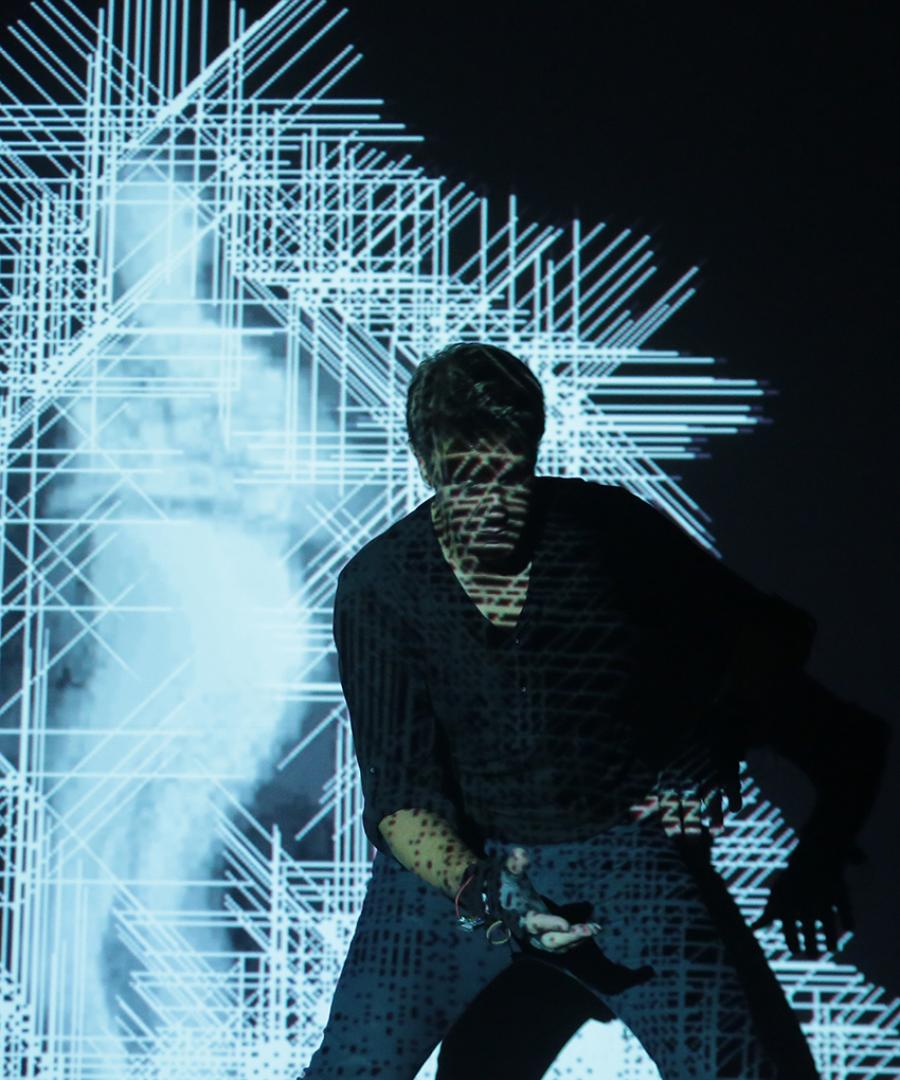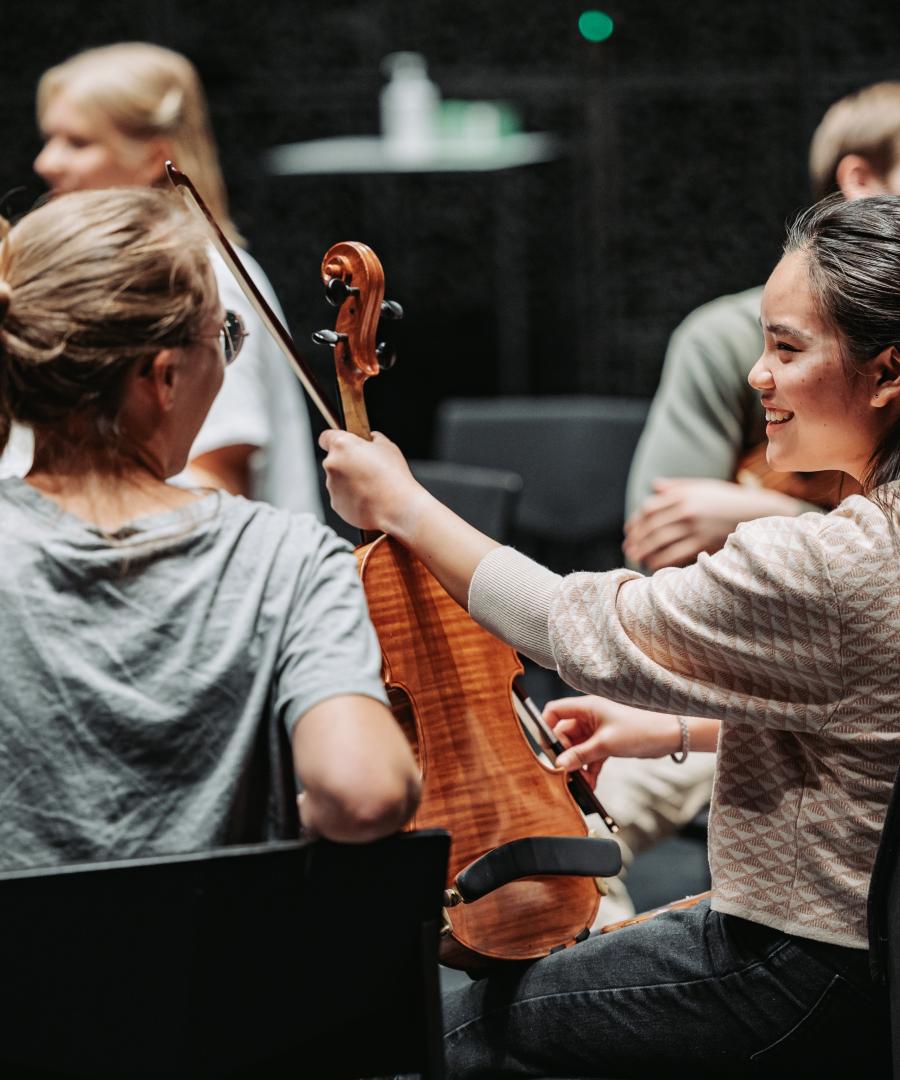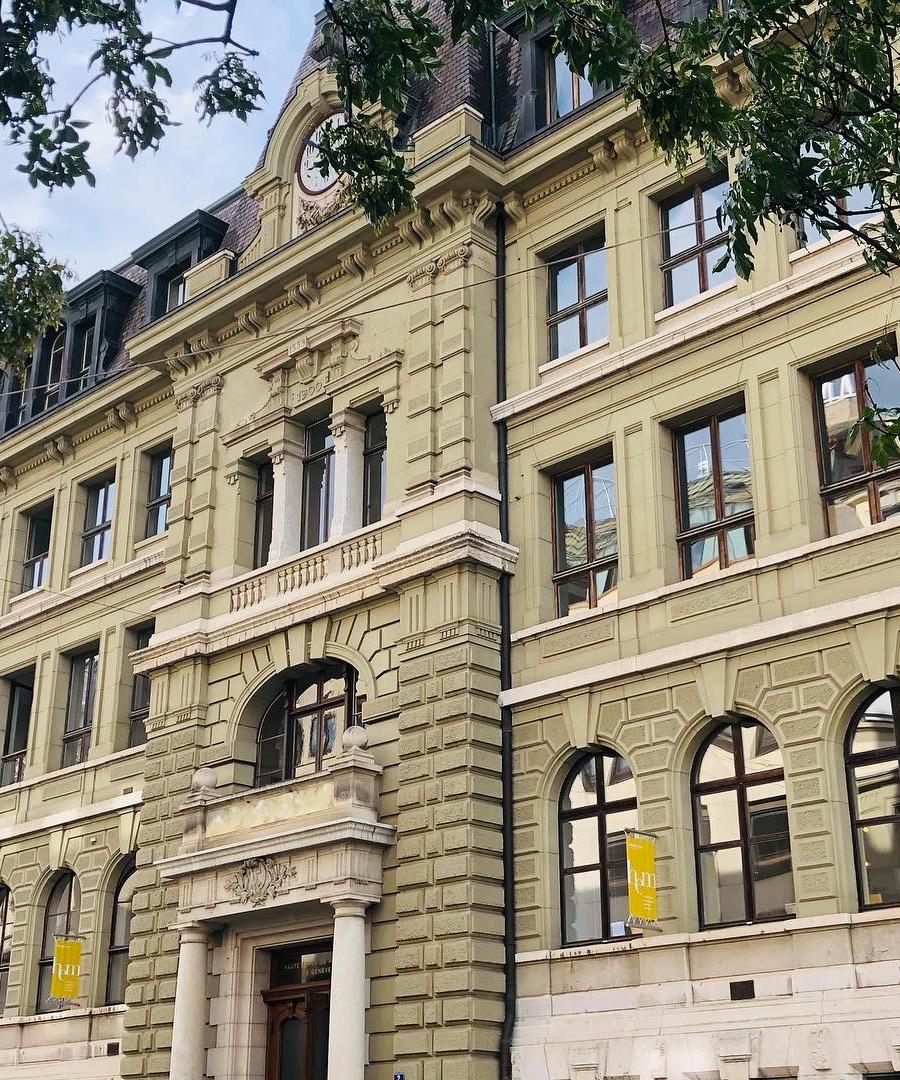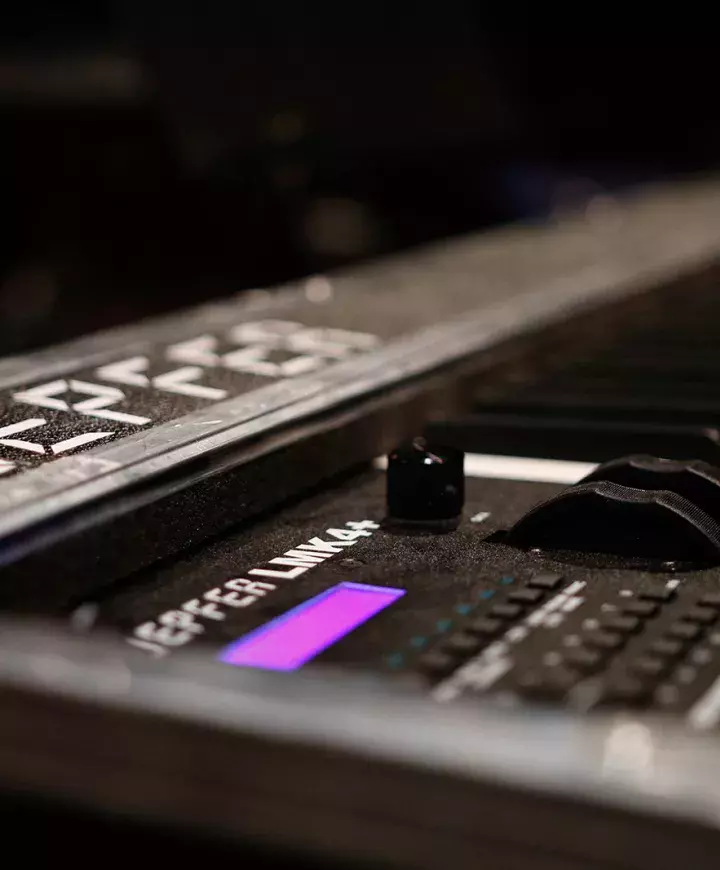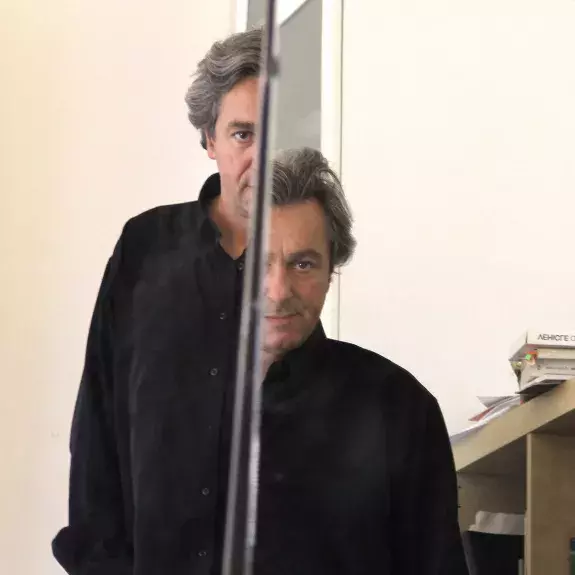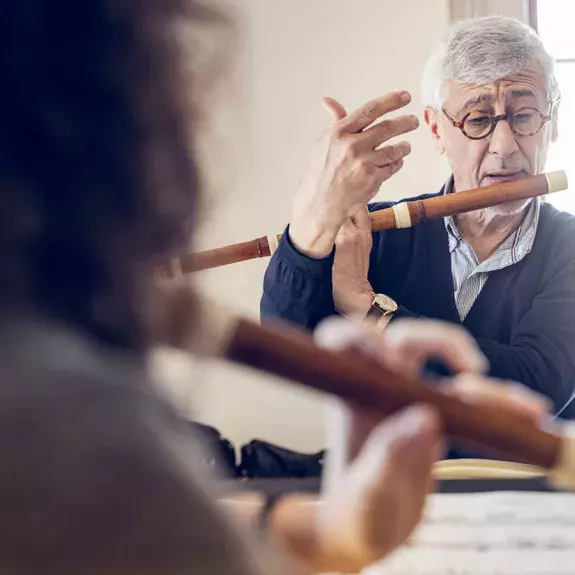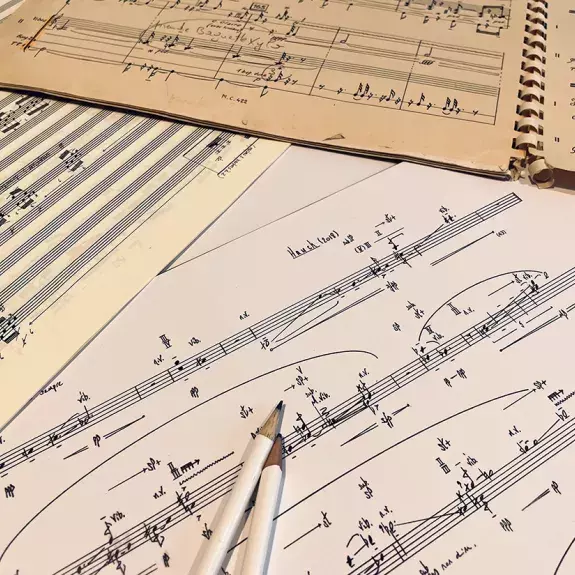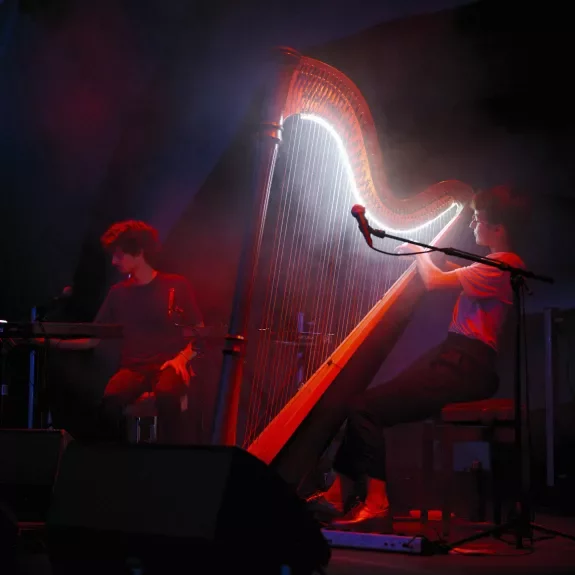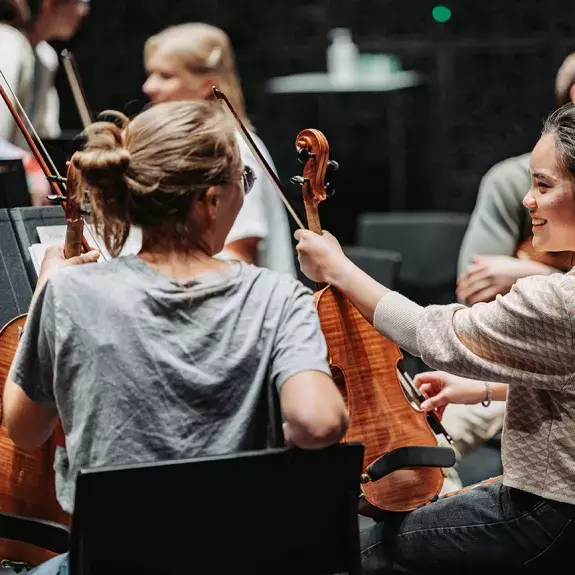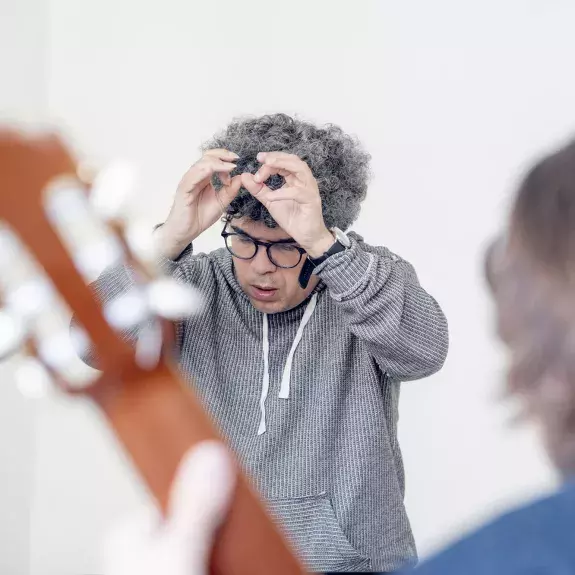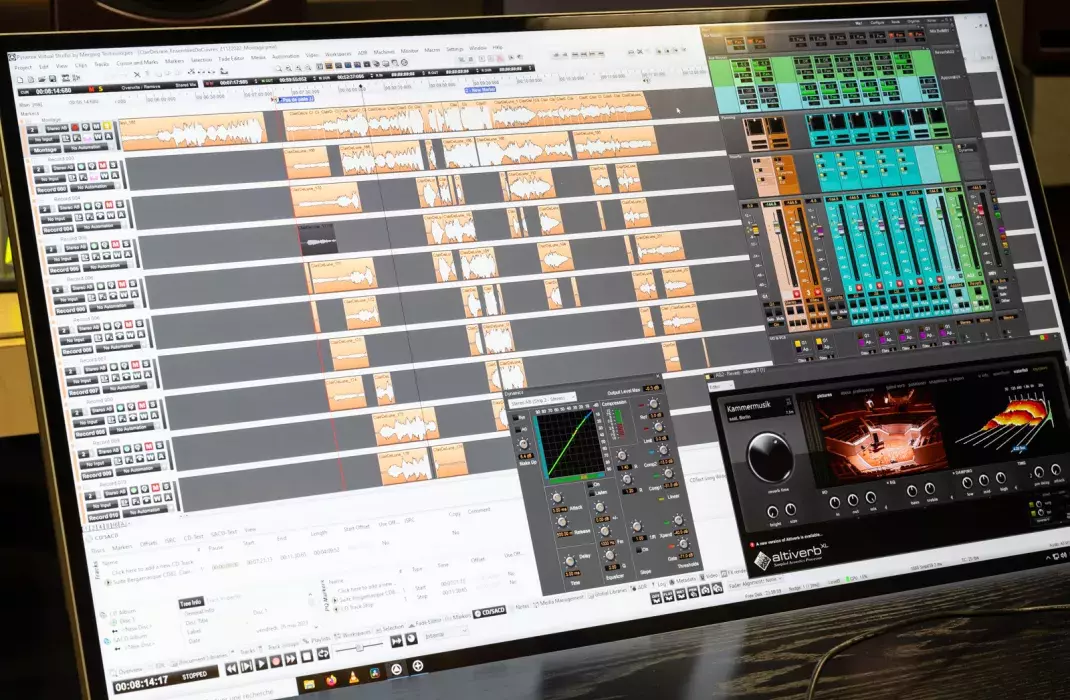Luis
Naon
Professor of Electroacoustic Composition - Mixed Composition
Born in La Plata, Argentina, in 1961, Luis Naon pursued his musical studies at the Universidad Nacional de La Plata, Universidad Católica Argentina in Buenos Aires, and later at the CNSM de Paris under the guidance of Guy Reibel, Laurent Cuniot, and Daniel Teruggi. He also studied with Sergio Ortega and Horacio Vaggione. Since 1991, he has been a professor of Composition and New Technologies at the Conservatoire National Supérieur de Musique de Paris. Additionally, he taught composition at ESMUC (Barcelona) from 2003 to 2008 and has been a professor of electroacoustics at the HEM de Genève since 2006.
From what could be considered his first work, "Final del Juego" for septet and magnetic tape (premiered at Studio 105 of Radio France in 1983), Naon has sought to implement this dual relationship (between America and Europe, between instruments and electronics).
He has been awarded the UNESCO International Composers Tribune in 1990 and 1996 (for "Tango del desamparo" and "Speculorum Memoria"), the Fondo Nacional de las Artes (for "Reflets"), the TRINAC Prize from the International Music Council (for "Cinq personnages en quête de hauteur"), the Olympia Composition Prize (for "Ombre de l'ombre"), and the Municipal Prize of the City of Buenos Aires in 1991 and 1995 (for "Speculorum Memoria"). He was nominated for the "3rd Victoires de la Musique Classique" (for Sextuor ". "), "Prix Georges Enesco" from SACEM, and "Luis de Narváez" Prize from Caja de Granada for his String Quartet No. 2.
Naon collaborates with various ensembles and institutions such as the Ministry of Culture and Communication, Teatro Colón (Buenos Aires), Musée d’Art Contemporain du Mexique, Orchestre de la Seine-Saint-Denis, Ensemble TM+, Lémanic Modern Ensemble, Interface, Musique Oblique, Musée d’Histoire de Montreuil, Orchestre Philharmonique de Radio France, INA-GRM, IRCAM, Orchestre de Paris, Ensemble Contrechamps, Ensemble Diagonal, Ukho ensemble de Kiev, and in festivals like Musica Strasbourg, MANCA, Festival d'Aix en Provence, Festival Archipel, and Vivier de Montréal.
In 1989, Naon composed the music for the parade on the Champs-Elysées and Place de la Concorde commemorating the Bicentennial of the French Revolution. This parade was televised worldwide.
The cycle of 25 works "Urbana," initiated in 1991 and completed in 2013, crystallizes under this generic title through "Urbana" (1997). It includes 25 works ranging from acousmatic pieces to symphonic orchestra.
He composed the music for the show "Les Princesses" for the opening of the Théâtre-Auditorium de Poitiers in partnership with choreographer Odile Azagury. Nearly 3 hours of music ranging from solo electroacoustic (for choreographers Anna Ventura, Karine Saporta, or Dominique Boivin) to pieces for 15 instruments and electronics (for choreographers Carolyn Carlson, Héla Fatoumi, Blanca Li, etc.). This entire production is captured on a double CD under the Empreinte Digitale label.
Recent works include "Quebrada/Horizonte" for orchestra, "Pájaro al borde de la noche" for cello, electronics, and ensemble premiered at the recent Présences festivals of Radio France, "Ébano y Metal" for the Lemanic Modern Ensemble (Switzerland/France).
Other notable recent works include "Rastros" for the ensembles Stick & Bow and Paramirabo of Montreal (featured in a monographic concert and video recording) and his "String Quartet III" (premiered at the Evora Festival in 2021, then at Archipel 2022 and projection space of IRCAM in 2023).
His latest piece, "Fueye," concertino for bandoneon and ensemble, was premiered by Juanjo Mosalini and the TM+ ensemble at the Maison de la Musique de Nanterre in October 2022, followed by performances at La Seine Musicale and Gennevilliers in May 2023.
Naon's works are published by Henry Lemoine, Gérard Billaudot, and Babelscores.
Learn more about Luis Naon.
